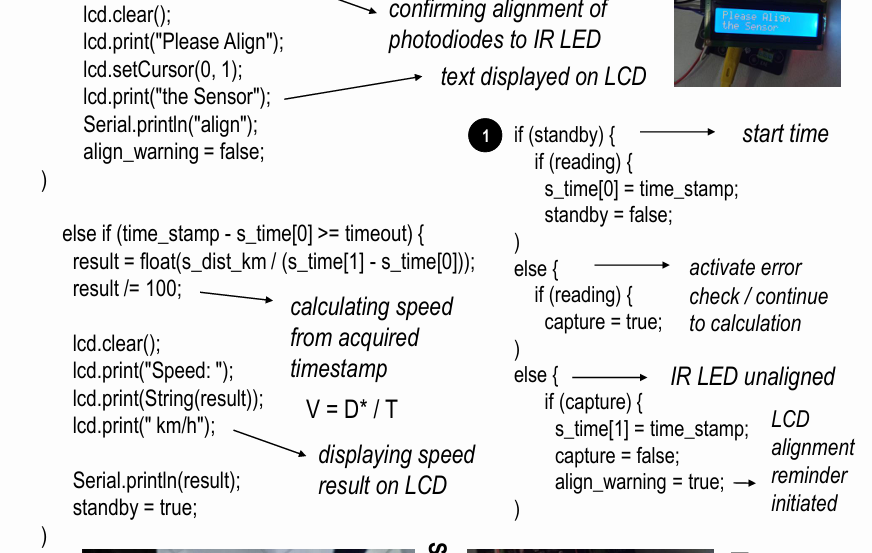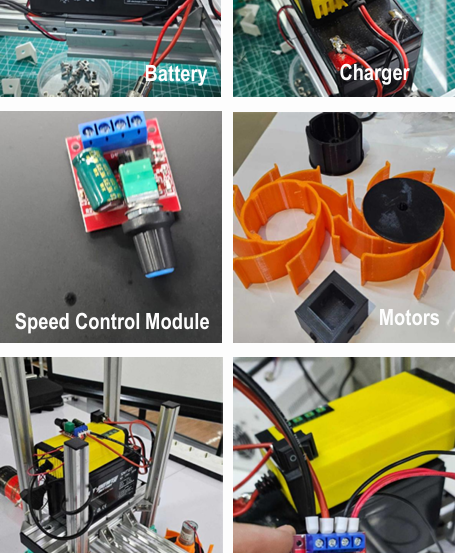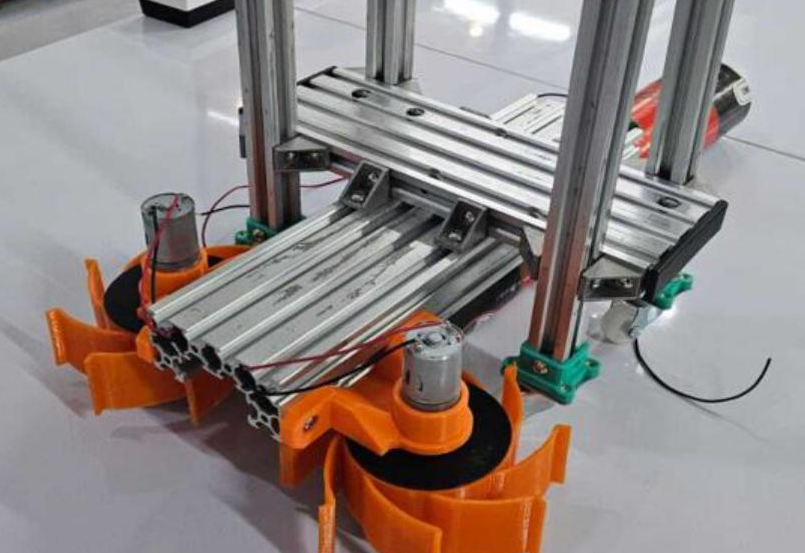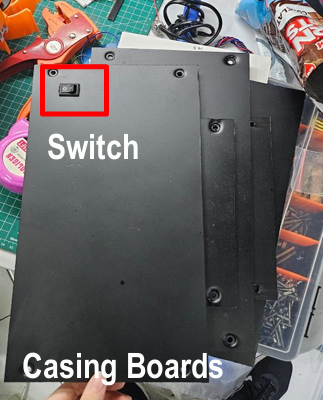A Passion Avenue For Science
Introduction
The realm of sports technology is specifically designed to elevate training efficiency, game analysis, and overall player performance through creative innovation. By providing practical solutions for common athlete challenges, sports technology drives sports efficiency forward. Badminton training is a rigorous activity that involves the use of a large number of shuttles. After completing drills, players often need to retrieve each individual shuttle and restack them manually to prepare for the next set. This is a common hassle for all badminton players due to the additional energy and time it consumes. However, with the introduction of a motor-based mobile device, the shuttlecock collector automates this task, reducing downtime and increasing training efficiency. Furthermore, this device can be paired with a shuttlecock speed sensor to maximize training potential. By utilizing photodiodes and IR LEDs, detailed speed metrics essential for player development are instantly displayed on an LCD. These technologies aim to facilitate better sports training through the interplay of mechanical and electrical engineering.
Main Programs Used
Fusion360, Autodesk Eagle, C++ and Tinkercad.
Project #1: Shuttlecock Collector
The Badminton Shuttlecock Collector is mechanical-based project designed to automate the retrieval of shuttle cocks from a playing court. The primary function of this device is to streamline the collection process, enhancing efficiency and reducing manual labor. An in-built handle is available for the user to push the device, utilizing motors to direct shuttles into a shuttlecock tube within the structure.
Prototypes
The motors used in the final project went through multiple stages of modification, starting from a brush-based motor, to a vertical scoop-like rotation, to a final horizontal pull-in rotation. These changes are created over time in order to adapt to the unique nature and shape of shuttlecocks, keeping into account its fragility. The horizontal rotation was the only design that successfully combats the issue where shuttlecock directions are scattered in a realistic on-court scenario. It will cause the shuttle to bounce first if contact is made on the feather crown instead of the cork tip - only accepts if cork enters first.
The making of Shuttlecock prototypes was divided into some stages (all pictures can be seen in the image section)
Motor prototyping
3D design research and trial
Circuit designing
Assembling
The component in the final product:
The main structure frame is made out of an aluminum profile frame, with pieces connected by T-nuts and hexagon bolts. TPU is utilized to smooth edges and secure parts in place. PVC foam board is cut and painted black to act as the casing, surrounding the sides and top of the product.
A space within the casing is intentionally left for air circulation within the system, protecting the battery from overheating. Embedded in the PVC foam board is the power switch connected to the charging box. This allows for easy access to the switch when charging.
The exterior reveals the two DC motor gearboxes connected to the whole system, alongside an aluminum frame handle and four wheels underneath.
An extensional compartment is also available on the front end of the device for shuttlecock tube storage. Users can slip a tube into the slot underneath and collect the shuttles with ease. All shuttles that come in contact tip-first are rejected by the motors, while those oriented the right way are accepted and pushed into the tube. A bit of maneuvering must be done to ensure the correct orientation of the shuttles.
Project #2: Speed Sensor
The shuttlecock speed sensor is a precision device designed to measure the speed of a shuttle cock as it travels accross the net. This particular design utilizes photodiodes and infrared LED in a two-part configuration, with one unit positioned on each side of the net. It integrates hardware and software to enhance performance analysis.
General Concept
Utilizing photodiodes and infrared LED facing each other on opposing sides of the net, photodiodes maintain an active initial state, looking to detect the lack okf IR when the shuttle is passing through the area in between. This utilizes recurring OR logic gates for a consistent connection between all photodiodes along the PCB. A calculation of speed is then made using the constant length of the shuttle and the first and last timestamp where IR is undetected within a constant frametime.
The circuit design and main code segment can be seen in the image section.
Assembly and Hardware
PCB Creation
Print PCB design onto sticker paper.
Laminate design onto prepared single side glass fiber (with copper plate) at high heat, remove paper.
Submerge into Iron (II) Chloride mixed with hot water to remove unwanted copper areas.
Rinse, cut to size an sand sharp edges.
Drill all marked necessary holes.
Solder all components into designated locations.
Final Components
An aluminum profile frame is created to hold both parts (IR, LED, PCB) in place at a fixed level across each other. Segments are connected using T nut, hexagon bolts and 3D printed TPU parts. The microcontroller used is an ESP32 and an 74hc32 ICs.
Conclusion, Application and Future Outlook
As this project focuses on the pure fundamental mechanisms behind these two devices, there is significant potential for various feature extensions in future applications.
An autonomous navigation system can be applied to the shuttlecock collector to map the court environment, either by following a predefined pattern or by adjusting its path based on the real-time location of shuttlecocks. This would further reduce the manual effort required from the user and additionally maximize training time.
In future applications, the shuttlecock speed sensor can be modified to be increasingly scalable, expanding its applicability to higher altitudes during a badminton smash. The overall concept of the speed sensor is also valuable for other hitting-relevant sports, such as baseball, where speed sensors could be integrated into bullpen areas to provide the required speed data for analyzing performance and improving pitching techniques.
In this work, Elaine and her mentor are creating devices to support coaches and athletes, helping them work more efficiently.
Development of Shuttlecock Collector and Speed Sensor to Improve Training Efficiency in Badminton
2023











